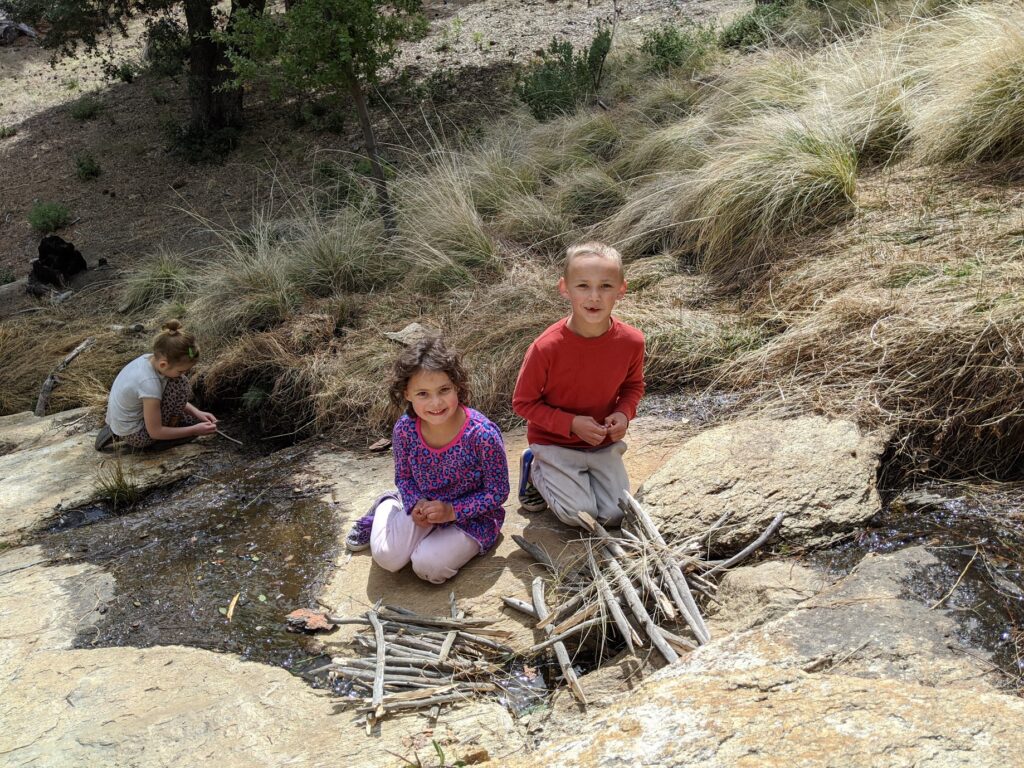In the last several homeschooling tips, I’ve talked about using relationships as a resource in wholistically designed systems. First, I recommended that your family explore mutualistic relationships by observing how they work in unplanned physical groupings of organisms in nature. Next, we took a look at using relationships as a resource in your garden. Then we took a more detailed look at mutualistic relationships. In today’s tip, I’ll introduce an activity that will provide your family with an opportunity to explore using relationships among design elements and between design elements and natural influences in natural building.
Today’s suggested activity is for your family to:
- Decide whether you want to design and build an outdoor fairy house, fort, or out-building (e.g., greenhouse).
- Pick a site for your building project.
- Come up with a list of design elements (e.g., walls, floor, ceiling, windows, doors, etc.) and directional natural influences at your site (e.g., the path of the sun, direction of water flow, wind direction, view, animal paths, etc.). Permaculture folk call these natural directional influences, sectors. Sector analysis is an important part of permaculture design.
- Make decisions about the location, orientation and arrangement of each design element and your whole structure and based on your sector analysis of the natural influences at your building site.
- Create a design drawing that shows the location and orientation of your whole structure and each included design element in relation to the natural features of your building site.
- Build your structure.
All children that are able to communicate can participate in this activity at a level that suits them. Just ask them what they want to build and with what materials, and support their collection of those materials and their building of your structure.
For toddlers, suggest a fairy house. Ask them if their fairies like being in the sun or shade and help them find a suitable spot. Then help them collect small sticks, leaves and stones and help them stack and arrange them. Emphasize: (1) that the same objects can be placed in different arrangements resulting in very different structures, and (2) that their whole fairy house can be placed in different locations with different results (e.g., a sunny house versus shady house for the fairies).
For early elementary age kids, you can ask them about the natural directional influences at your site (e.g., the path of the sun, direction of water flow, wind direction, view, animal paths, etc.) that might influence their choice or location, orientation and arrangement of design elements (e.g., placement of building and arrangement and size of doors and windows). Emphasize, the relationships among their design elements (e.g., where to put window in relation to the door to create a cross breeze) and between their design elements and natural directional features (e.g., are windows and doors south facing?).
Older children can work on temporary forts built from natural materials. Or, they can help the rest of the family with more permanent structures like greenhouses, chicken coops or storage buildings. They can also extend their exploration of natural building with attention to natural directional features by googling “permaculture sectors” or clicking here. Finally, you can discuss similarities and differences between: (a) using mutualistic relationships between living beings (i.e., plants, insects, worms, fungi and soil bacteria) in a garden, and (b) paying attention to relationships among design elements and between design elements and natural influences that flow through a site in a direction, in natural building.
I hope this information is useful for your family’s garden planning and other natural building projects. Please post questions and ideas below!
